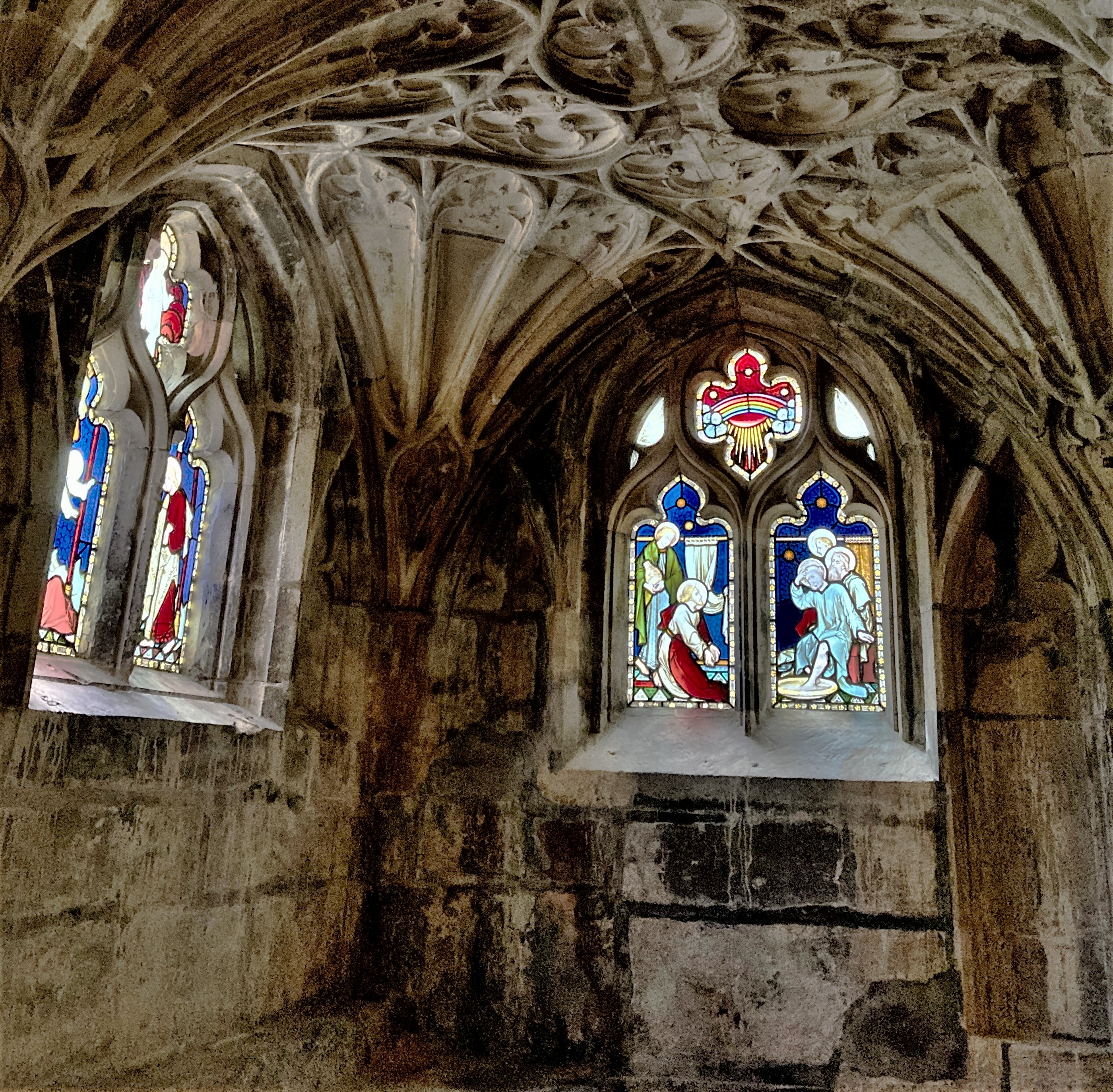Lavatorium
|
Known as the monks' lavatory, this long, shared basin - or lavatorium - can be found in the cloisters along the north walk of Gloucester Cathedral. It would have had fresh water running along the trough with multiple sink outlets. |
Contents |
[edit] Introduction
Pevsner’s Architectural Glossary (second edition) was published by Yale University Press in 2018. It defines a lavatorium as: ‘A washing place adjacent to the refectory or dining hall in an abbey or monastery’. A lavatorium may also be referred to as a laver or lavatory. The plural of lavatorium is lavatoria.
This communal washing area was typically found in medieval abbeys or in close proximity to cathedral cloisters.
[edit] Function
The purpose of a lavatorium was to give monks the ability to complete their handwashing prior to meals.
Some lavatoria were fashioned as long troughs situated under cover and in close proximity to the refectory. Others were constructed as fountains in covered courtyards. Modest lavatoria were also provided as basins in separate rooms that had been designated for that purpose. The basins and troughs were frequently lined with lead and included drains to remove dirty water.
Lavatorium were also used by monks for shaving purposes, and may have been used during certain ceremonial occasions (such as those associated with acts of humility).
Clean towels were kept in cupboards referred to as aumbries. There was a person in charge of changing the towels in the aumbries, cleaning the lavatorium and maintaining the shaving supplies for the monks. That refectorian (or refectoror) was known as the fraterer; he was also responsible for maintaining supplies and cleanliness associated with the refectory or dining room.
[edit] Decorative aspects of lavatorium
Running water was provided through lead pipes and controlled by taps. These taps could be fashioned from bronze or carved in elaborate shapes.
Carved panels were sometimes installed in lavatoria as decorative features.
|
The stained glass windows at the Gloucester Cathedral lavatorium were made in 1868 by John Hardman of Birmingham. |
In Gloucester Cathedral, the long lavatorium is located within the 16th century cloisters situated to the north of the nave of the building. This washing room is decorated with a modest version of the elaborate, fan vaulted ceiling of the nearby cloisters. It also includes Victorian stained glass windows that capture Biblical scenes associated with water.
[edit] Related articles on Designing Buildings
IHBC NewsBlog
Old Sarum fire in listed (& disputed) WW1 Hangar - Wiltshire Council has sought legal advice after fire engulfed a listed First World War hangar that was embroiled in a lengthy planning dispute.
UK Antarctic Heritage Trust launches ‘Virtual Visit’ website area
The Trust calls on people to 'Immerse yourself in our heritage – Making Antarctica Accessible'
Southend Council pledge to force Kursaal owners to maintain building
The Council has pledged to use ‘every tool in the toolbox’ if urgent repairs are not carried out.
HE’s Research Magazine publishes a major study of the heritage of England’s suburbs
The article traces the long evolution of an internal programme to research 200 years of suburban growth
IHBC Context 183 Wellbeing and Heritage published
The issue explores issues at the intersection of heritage and wellbeing.
SAVE celebrates 50 years of campaigning 1975-2025
SAVE Britain’s Heritage has announced events across the country to celebrate bringing new life to remarkable buildings.
IHBC Annual School 2025 - Shrewsbury 12-14 June
Themed Heritage in Context – Value: Plan: Change, join in-person or online.
200th Anniversary Celebration of the Modern Railway Planned
The Stockton & Darlington Railway opened on September 27, 1825.
Competence Framework Launched for Sustainability in the Built Environment
The Construction Industry Council (CIC) and the Edge have jointly published the framework.
Historic England Launches Wellbeing Strategy for Heritage
Whether through visiting, volunteering, learning or creative practice, engaging with heritage can strengthen confidence, resilience, hope and social connections.
















